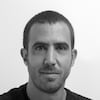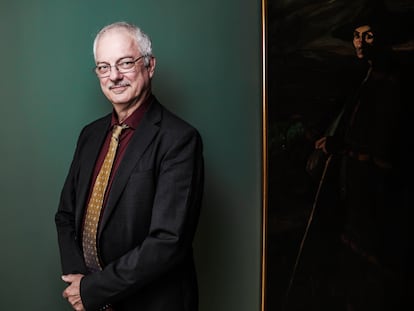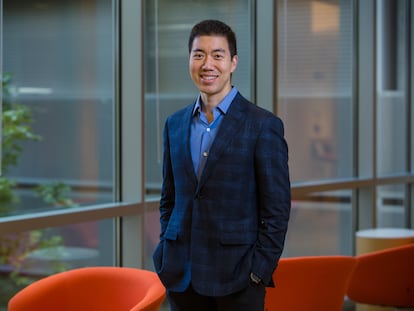Jean-Pierre Sauvage, Nobel Laureate in Chemistry: ‘Work is being done on machines that will travel through the blood to kill cancer’
The French researcher began the molecular machine revolution four decades ago, with biological motors that were 100,000 times smaller than the thickness of a human hair
Chemist Jean-Pierre Sauvage narrows his eyes to mentally travel to a world that no longer exists. He was born in Paris near the end of World War II, as the Nazis were fleeing France. His father – Camille Sauvage – was a well-known jazz clarinettist, who abandoned his son and pursued an artistic career as a composer of film scores. His mother – Lydie Angèle Arcelin, a housewife – rebuilt her life with an “affectionate and attentive” military officer from the French Air Force, who never stopped resettling for work. Each year, little Jean-Pierre landed in a different place, such as Tunisia, Algeria and the United States. “I wasn’t a very good student because I changed schools all the time,” he recalls. Sauvage seemed doomed to academic failure… but ended up winning the 2016 Nobel Prize in Chemistry for “breathing a surrogate for life into molecules that were devoid of it,” in his own words.
Sauvage’s relevance will be better understood a century from now. Back in 1983, his team succeeded in synthesizing a molecular structure that included two interlocking rings. As it resembled the links of a chain, they baptized it as “catenane.” In 1994, his laboratory managed to make one of the two rings rotate 180 degrees, after subjecting it to an electrical stimulus. This may sound simple, but it was a historic milestone: the first step towards creating molecular machines, made up of moving parts on a scale 100,000 times smaller than the thickness of a human hair.
In 1999, the Dutch chemist Ben Feringa built the first molecular motor, with a light-powered propeller. “And very serious work is already being done on building machines that will travel through the blood and transport molecules that can kill cancer cells,” Sauvage celebrates. He received EL PAÍS at a hotel in Valencia, where he was on a jury for the King James I Awards, which recognizes achievements in research and entrepreneurship.
Sauvage and Feringa often say that they feel like the Wright brothers. Back in 1903, the American aviation pioneers built the first flying machine, without being able to suspect that – less than a century later – there would be planes carrying more than a hundred passengers going from one continent to another at a speed faster than sound. “It’s impossible to make predictions,” the French chemist notes. “Some fundamental discoveries took a century to become applications. Semiconductors date from around 1830 and were applied a century later to make transistors. Today, they’re used to make mobile phones and computers,” the researcher explains. “Molecular machines aren’t inspired by nature, as in the case of airplanes and birds. Molecular machines are an authentic creation by human beings, by chemists.”
Last year, the chemist – who is an emeritus professor at the University of Strasbourg – published a book titled The Elegance of Molecules. In the pages, he lets his imagination run wild. “Over time, most of the chemical reactions that govern nature could be controlled or imitated by a nanorobot: counter-offensives by the immune system, the production of antibodies, hormones on demand, the repairing of damaged cells and organs [or] the correction of anomalies in the genetic text,” Sauvage writes. “None of this will belong in the realm of science fiction in the long-term.”
Sitting in the hotel’s restaurant, however, the researcher’s realism contrasts with his futuristic fantasy. “Today, we can’t do much. Molecular machines are a somewhat new concept: we can make molecules that move as we choose [and] we can make a fairly complex molecule perform a rotary motion. Or we can make it behave like a muscle, stretching and contracting. The applications will arrive in the future, but we’re not there yet,” he stresses.
The French researcher has been developing these molecular muscles since 2002 alongside a Spanish chemist – María Consuelo Jiménez – from the Polytechnic University of Valencia. “The first thing was to show that we can make a molecule that contracts and stretches. Now, you can think of making materials – especially fibers – that can contract and stretch. Perhaps artificial muscles could be made to replace damaged muscles in people, but that will be in the future. At the moment, there are no real applications,” Sauvage clarifies.
For years, the French chemist also pursued “the holy grail of chemistry,” which is the photolysis of water: using the inexhaustible light of the sun to break the H₂O molecule and obtain dihydrogen (H₂)... an ideal fuel, capable of producing large amounts of energy by generating only water as waste, rather than CO₂, as occurs with oil and gas. The researcher compares this “legendary chemical reaction” with the dream of alchemists, who, long ago, wished to transform lead into gold. It would be an endless and non-polluting source of energy. Sauvage recalls that he took up the challenge in 1974, during a global oil crisis. The chemist became obsessed with this goal for years, working day and night, even on weekends.
Sauvage took a significant step forward in 1977. His team succeeded in creating a mixture of water and light-sensitive molecules, which released tiny bubbles of hydrogen. The experiment sparked worldwide expectations… but the chemical reaction required two precious metals – ruthenium and rhodium – that were so scarce that it was impossible to normalize the process. “There are many laboratories searching for complex molecules that can convert solar energy into fuel, into hydrogen. It’s a field very close to that of molecular machines, but it’s difficult. We abandoned those projects because we knew how difficult they were. And now, I’ve stopped researching, because I’m too old,” he sighs.
Sauvage invites readers to engage in intellectual exploration while reading his book. “The internet and algorithms offer us – with astonishing relevance – the content that corresponds to our tastes and our habits. And, in doing so, they lock us in them,” he laments.
The researcher has maintained a strict routine for decades. Every Saturday, he goes to his university library as soon as it opens – at 8:30AM – and picks up thirty scientific journals. There, totally alone, he jots down the discoveries made by others – including those from other disciplines – in a notebook.
“Imagination cannot be forced, but, like luck, I’m convinced that it’s provoked. My readings and scientific daydreams on Saturday mornings… have played a decisive role in the synthesis of the first catenane,” he reflects in his book. In Valencia, the chemist bitterly remembers his biological father – Camille Sauvage – who died in 1981. “He left when I was a baby and disappeared from my life, but he was well-known in France as a composer and conductor.” The musician died two years before his son started the scientific revolution that earned him the Nobel Prize in Chemistry.
Sign up for our weekly newsletter to get more English-language news coverage from EL PAÍS USA Edition
Tu suscripción se está usando en otro dispositivo
¿Quieres añadir otro usuario a tu suscripción?
Si continúas leyendo en este dispositivo, no se podrá leer en el otro.
FlechaTu suscripción se está usando en otro dispositivo y solo puedes acceder a EL PAÍS desde un dispositivo a la vez.
Si quieres compartir tu cuenta, cambia tu suscripción a la modalidad Premium, así podrás añadir otro usuario. Cada uno accederá con su propia cuenta de email, lo que os permitirá personalizar vuestra experiencia en EL PAÍS.
¿Tienes una suscripción de empresa? Accede aquí para contratar más cuentas.
En el caso de no saber quién está usando tu cuenta, te recomendamos cambiar tu contraseña aquí.
Si decides continuar compartiendo tu cuenta, este mensaje se mostrará en tu dispositivo y en el de la otra persona que está usando tu cuenta de forma indefinida, afectando a tu experiencia de lectura. Puedes consultar aquí los términos y condiciones de la suscripción digital.
More information
Archived In
Últimas noticias
ChatGPT fails the test: This is how it endangers the lives of minors
The late consecration of women artists in their 90s
The Florida Keys tourist paradise is besieged by immigration agents: ‘We’ve never seen anything like this’
The latest scam on WhatsApp behind the legal dream: using immigration status as bait
Most viewed
- Families demand repatriation of bodies of Colombians who died in Ukraine: ‘This war is a slaughterhouse for foreigners’
- The low-cost creative revolution: How technology is making art accessible to everyone
- Liset Menéndez de la Prida, neuroscientist: ‘It’s not normal to constantly seek pleasure; it’s important to be bored, to be calm’
- Christian Louboutin: ‘Young people don’t want to be like their parents. And if their parents wear sneakers, they’re going to look for something else’
- ‘El Limones’ and the growing union disguise of Mexican organized crime











































